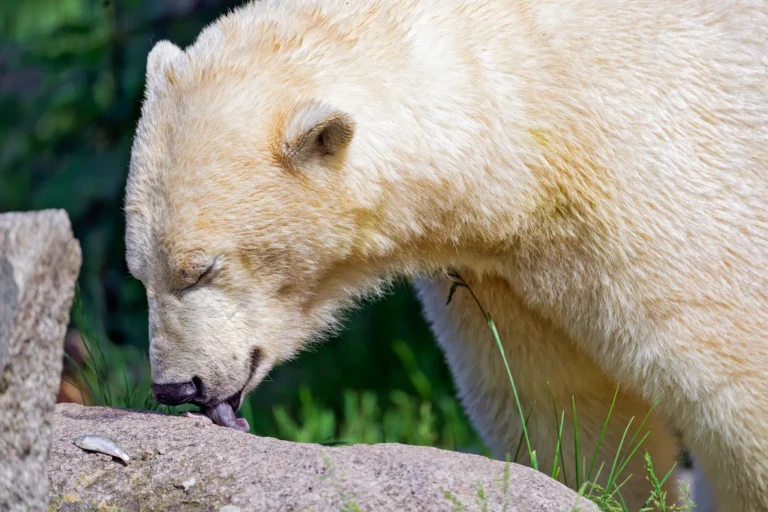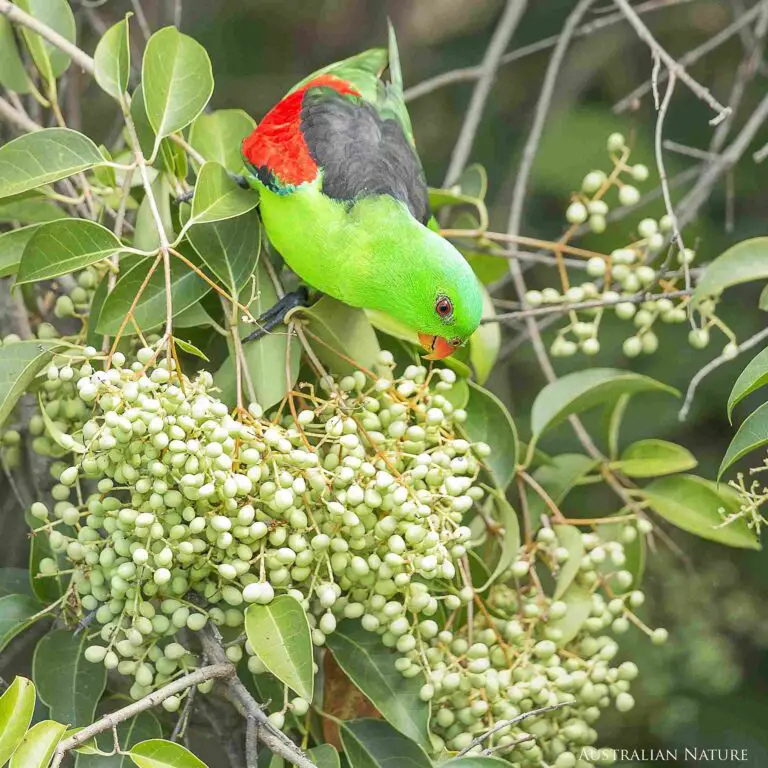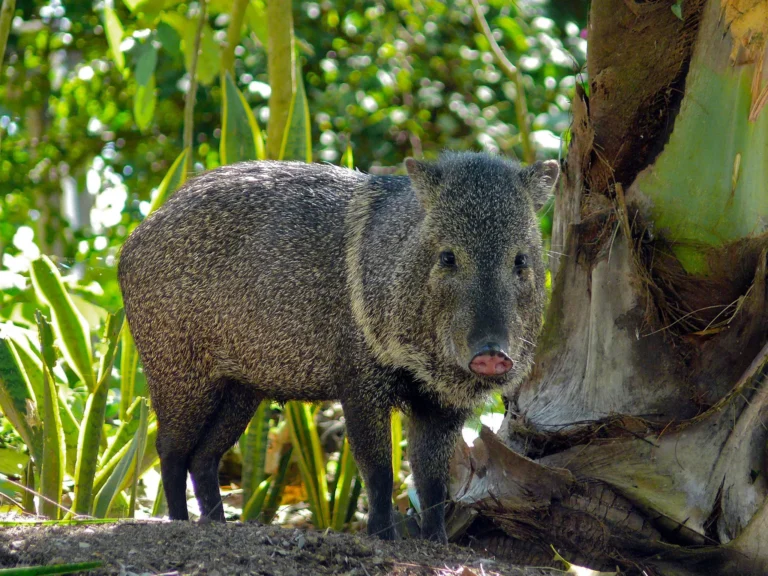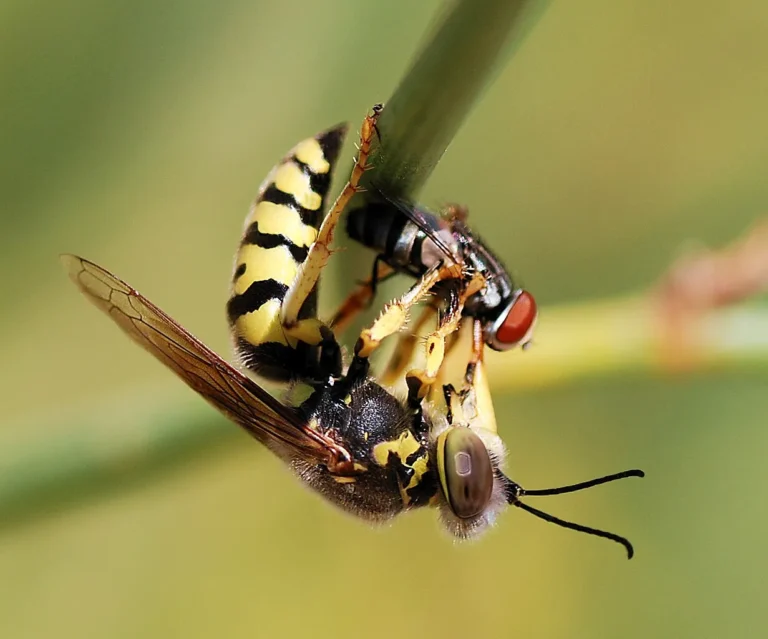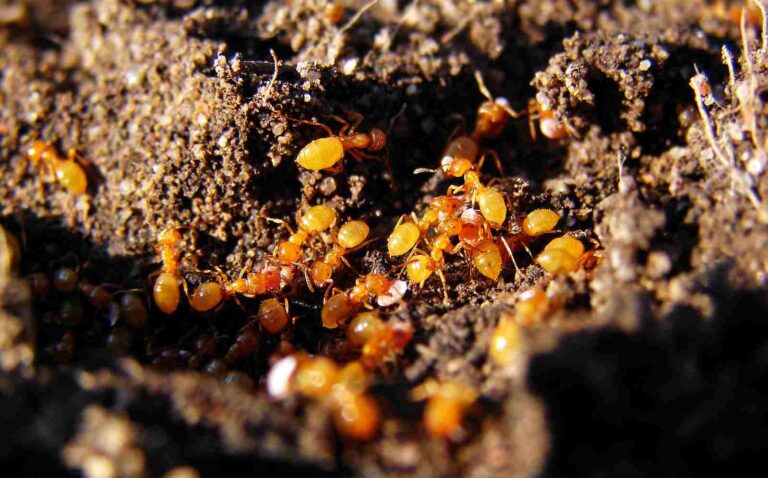Are Zooplankton Producers or Consumers? An Overview of Zooplankton Trophic Classification
Zooplankton are consumers in the ecosystem or food chain because they do not manufacture their own too but rather rely on other organisms to serve as their food sources.
This article discusses zooplankton within the context of their trophic position and role(s).
Are Zooplankton Primary Consumers?
Yes, zooplankton are primary consumers in aquatic food chains because they mainly feed on phytoplankton, which are autotrophic primary producers. This means that zooplankton rely on consuming other organisms, specifically phytoplankton, to obtain the energy and nutrients they need to survive.
Phytoplankton are microscopic, photosynthetic organisms that float near the surface of the water. They use sunlight, carbon dioxide, and nutrients to produce organic matter through photosynthesis. Zooplankton, on the other hand, are small, drifting animals that cannot produce their own food through photosynthesis like phytoplankton. Instead, they must consume other organisms to obtain the energy and nutrients they require.
One of the main reasons why zooplankton are considered primary consumers is because their diet is dominated by phytoplankton. Phytoplankton form the base of the aquatic food chain, and zooplankton play a crucial role in transferring energy from primary producers to higher trophic levels. By consuming phytoplankton, zooplankton help to control their population size and prevent excessive growth, which could lead to harmful algal blooms.
Another reason why zooplankton are classified as primary consumers is because they are biologically simpler than most aquatic heterotrophs. They have relatively simple digestive systems and lack specialized feeding structures. This simplicity allows them to efficiently consume and process phytoplankton, which are small and easily digestible. This simplicity also enables zooplankton to rapidly reproduce and maintain their population size, ensuring a steady supply of primary consumers in the ecosystem.
Furthermore, the trophic footprint and predatory impact of zooplankton are relatively small compared to larger consumers in the food chain. While zooplankton may consume large quantities of phytoplankton, their individual size and biomass are small. This means that their overall impact on the population dynamics of phytoplankton and other primary producers is limited. However, their role as primary consumers is still vital in maintaining the balance and stability of the ecosystem.
Reasons Why Zooplankton are Primary Consumers
1. Their Diet is Dominated by Phytoplankton
Zooplankton are considered primary consumers in the food chain due to their diet being dominated by phytoplankton. This is one of the key reasons why zooplankton are classified as primary consumers.
Phytoplankton, which are microscopic plants, form the base of the marine food web. They are the primary producers, using photosynthesis to convert sunlight into energy. Zooplankton, on the other hand, are unable to manufacture their own food and rely on heterotrophic modes of energy acquisition. They feed on phytoplankton as their primary source of nutrition.
The dominance of phytoplankton in the diet of zooplankton is crucial in understanding their trophic classification. These tiny organisms consume large quantities of phytoplankton, which provides them with the necessary energy and nutrients to survive and grow. By consuming phytoplankton, zooplankton play a vital role in transferring energy from the primary producers to higher trophic levels in the food chain.
Phytoplankton are rich in essential nutrients, such as nitrogen and phosphorus, which are necessary for the growth and development of zooplankton. The high abundance of phytoplankton in aquatic ecosystems ensures a consistent food supply for zooplankton populations. This availability of phytoplankton as a primary food source is a key factor in the classification of zooplankton as primary consumers.
Furthermore, the relatively simple biological structure of zooplankton compared to most aquatic heterotrophs also contributes to their classification as primary consumers. Zooplankton are microscopic organisms with relatively few and simple organelles. While they are more complex than most phytoplankton, their biological simplicity makes them well-suited for consuming and digesting phytoplankton.
2. Zooplankton are Biologically Simpler Than Most Aquatic Heterotrophs
Zooplankton are biologically simpler than most aquatic heterotrophs, making them well-suited for their role as primary consumers. While they are microscopic organisms, they have relatively few and simple organelles compared to larger aquatic organisms. This simplicity in their biological structure is one of the reasons why zooplankton are classified as primary consumers.
Unlike phytoplankton, which are single-celled organisms, zooplankton have more complex cellular structures. They possess specialized organelles that enable them to perform essential functions such as feeding, digestion, and reproduction. However, compared to most aquatic heterotrophs, zooplankton still exhibit a simpler organization.
The simplicity of zooplankton’s biological structure allows them to efficiently consume and digest their primary food source, phytoplankton. Zooplankton have specialized feeding structures, such as cilia or appendages, that enable them to capture and ingest phytoplankton. These structures are relatively simple compared to the complex feeding mechanisms of larger aquatic organisms.
Despite their simplicity, zooplankton are more complex than phytoplankton, which are the primary producers they feed on. Phytoplankton are single-celled organisms that rely on photosynthesis to convert sunlight into energy. In contrast, zooplankton are multicellular organisms with specialized cells and tissues. This increased complexity allows zooplankton to perform more diverse functions and adapt to a wider range of environmental conditions.
The biological simplicity of zooplankton is advantageous in their role as primary consumers. It allows them to efficiently consume and digest phytoplankton, which forms the basis of their diet. By feeding on phytoplankton, zooplankton contribute to transferring energy from the primary producers to higher trophic levels in the food chain.
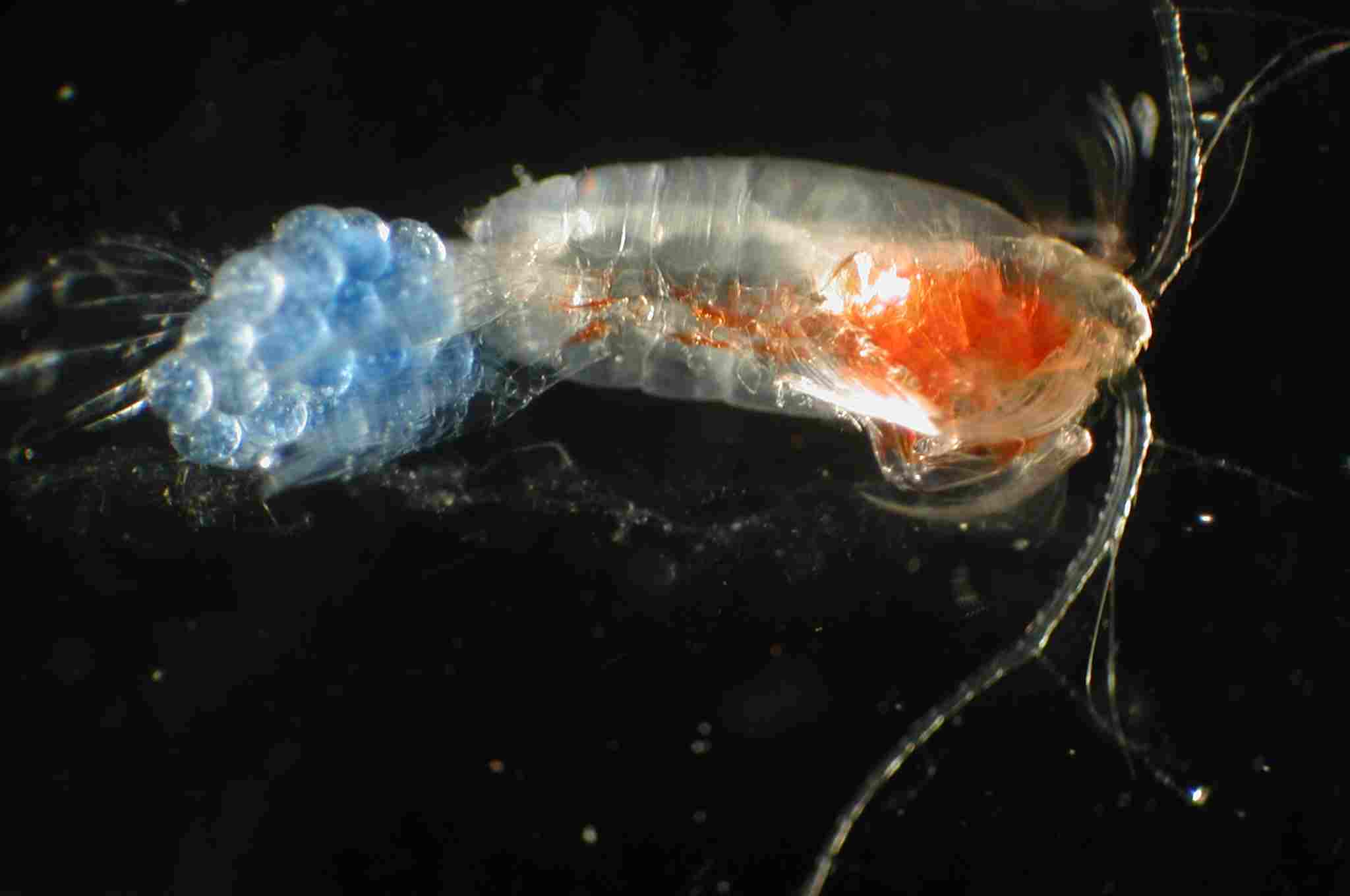
3. The Trophic Footprint and Predatory Impact of Zooplankton are Relatively Small
The trophic footprint and predatory impact of zooplankton are relatively small compared to secondary consumers like juvenile fish. This is one of the reasons why zooplankton are classified as primary consumers.
Zooplankton, being microscopic organisms, have a limited ability to consume large quantities of prey. Their small size restricts the amount of food they can capture and consume in comparison to larger organisms. This limited trophic footprint means that zooplankton have a smaller impact on the overall prey population compared to secondary consumers.
Additionally, zooplankton are not as efficient predators as larger organisms. Their feeding mechanisms, such as cilia or appendages, are designed for capturing and ingesting small prey like phytoplankton. They are not well-equipped to capture and consume larger prey. This further contributes to their relatively small predatory impact.
The small trophic footprint and predatory impact of zooplankton are important factors in maintaining the balance of aquatic ecosystems. By consuming phytoplankton and other primary producers, zooplankton help regulate the population sizes of these organisms. This, in turn, affects the availability of resources for higher trophic levels in the food chain.
Are Zooplankton Consumers?
Yes, zooplankton are consumers because they must feed on other organisms to acquire energy and nutrients required for their survival.
Reasons Why Zooplankton are Consumers
1. They are Incapable of Manufacturing their Own Food
Zooplankton are classified as consumers because they are incapable of manufacturing their own food. This inability to produce their own food sets them apart from primary producers, such as phytoplankton, which are capable of photosynthesis. Instead, zooplankton rely on heterotrophic modes of energy acquisition, meaning they obtain their energy by consuming other organisms.
One of the main reasons why zooplankton are consumers is their lack of the necessary biological machinery to produce their own food. Unlike plants and some bacteria, zooplankton do not possess chloroplasts or other structures that enable them to convert sunlight into energy. This limitation forces them to seek out and consume other organisms to meet their energy needs.
Zooplankton are highly dependent on the availability of food sources in their environment. They feed on a variety of organisms, including phytoplankton, bacteria, and other small zooplankton. These food sources serve as the primary energy input for zooplankton, allowing them to grow, reproduce, and carry out their metabolic functions.
The reliance of zooplankton on heterotrophic modes of energy acquisition is a key factor in their classification as consumers. They actively search for and consume other organisms as a means of obtaining the energy and nutrients they need to survive. This places them in the consumer category of the trophic pyramid, where they occupy a crucial role in transferring energy from primary producers to higher trophic levels.
2. Zooplankton Rely On Heterotrophic Modes of Energy Acquisition
Zooplankton rely on heterotrophic modes of energy acquisition, which is a key reason why they are classified as consumers. Unlike primary producers, such as phytoplankton, zooplankton are unable to manufacture their own food. Instead, they depend on consuming other organisms to obtain the energy they need to survive and carry out their metabolic functions.
One of the primary ways zooplankton acquire energy is by feeding on phytoplankton. Phytoplankton are microscopic, photosynthetic organisms that form the base of the aquatic food chain. They convert sunlight into energy through the process of photosynthesis, producing organic compounds that serve as a food source for zooplankton. By consuming phytoplankton, zooplankton obtain the energy and nutrients necessary for their growth and reproduction.
In addition to phytoplankton, zooplankton also feed on bacteria and other small zooplankton. Bacteria are abundant in aquatic environments and play a crucial role in nutrient cycling. Zooplankton consume bacteria as a source of energy and nutrients, contributing to the transfer of energy through the food web.
The reliance of zooplankton on heterotrophic modes of energy acquisition highlights their role as consumers in the trophic pyramid. They actively search for and consume other organisms to meet their energy needs, playing a vital role in transferring energy from primary producers to higher trophic levels. This energy transfer is essential for the functioning of aquatic ecosystems and the maintenance of biodiversity.
Furthermore, the consumption of other organisms by zooplankton has important ecological implications. Zooplankton exert predation pressure on their prey, influencing the abundance and composition of phytoplankton communities. By regulating the population sizes of primary producers, zooplankton help maintain the equilibrium and stability of aquatic ecosystems.
3. Producers are a Major Food Source for Zooplankton
Zooplankton are classified as consumers because they rely on consuming other organisms to obtain the energy they need to survive and carry out their metabolic functions. One of the primary sources of food for zooplankton is producers, such as phytoplankton. Phytoplankton are microscopic, photosynthetic organisms that form the base of the aquatic food chain. They convert sunlight into energy through photosynthesis, producing organic compounds that serve as a food source for zooplankton.
The consumption of producers by zooplankton is a crucial aspect of their role as consumers. Producers, including phytoplankton, are a major food source for zooplankton. These tiny organisms provide the energy and nutrients necessary for the growth and reproduction of zooplankton. By feeding on producers, zooplankton play a vital role in transferring energy from the lower trophic levels to higher trophic levels in the food chain.
The reliance of zooplankton on producers has significant implications for the functioning of aquatic ecosystems. As consumers, zooplankton exert predation pressure on producers, influencing the abundance and composition of phytoplankton communities. By regulating the population sizes of primary producers, zooplankton help maintain the equilibrium and stability of aquatic ecosystems.
The consumption of producers by zooplankton also contributes to the cycling of nutrients in aquatic environments. When zooplankton consume phytoplankton, they assimilate the nutrients contained within them. These nutrients are then released back into the water through excretion and decomposition, making them available for other organisms in the ecosystem. This nutrient recycling process is essential for the productivity and sustainability of aquatic ecosystems.
Furthermore, the consumption of producers by zooplankton has cascading effects on higher trophic levels. Zooplankton serve as an important food source for larger organisms, such as fish and whales, which are higher up in the food chain. The energy transferred from producers to zooplankton and then to higher trophic levels supports the growth and survival of these organisms. Thus, the role of zooplankton as consumers of producers has far-reaching implications for the overall structure and dynamics of aquatic food webs.
What Type of Consumers are Zooplankton?
Zooplankton are classified as primary consumers in trophic level 2 of the food chain, directly above producers. This classification is based on their feeding habits and their position in the trophic hierarchy. However, it is important to note that not all zooplankton species have the same feeding preferences or consume the same types of organisms.
One reason why zooplankton are considered consumers is because they are incapable of manufacturing their own food. Unlike producers, such as phytoplankton, zooplankton do not have the ability to carry out photosynthesis and convert sunlight into energy. Instead, they rely on heterotrophic modes of energy acquisition, which means they obtain their energy by consuming other organisms.
Another reason why zooplankton are consumers is because they rely heavily on producers as a major food source. Producers, including phytoplankton, form the base of the aquatic food chain and provide the energy and nutrients necessary for the growth and reproduction of zooplankton. By feeding on producers, zooplankton play a crucial role in transferring energy from the lower trophic levels to higher trophic levels in the food chain.
The classification of zooplankton as consumers has important implications for the functioning of aquatic ecosystems. As consumers, zooplankton exert predation pressure on producers, influencing the abundance and composition of phytoplankton communities. This predation pressure helps to regulate the population sizes of primary producers and maintain the equilibrium and stability of aquatic ecosystems.
Furthermore, the consumption of producers by zooplankton contributes to the cycling of nutrients in aquatic environments. When zooplankton consume phytoplankton, they assimilate the nutrients contained within them. These nutrients are then released back into the water through excretion and decomposition, making them available for other organisms in the ecosystem. This nutrient recycling process is essential for the productivity and sustainability of aquatic ecosystems.
The role of zooplankton as consumers of producers also has cascading effects on higher trophic levels. Zooplankton serve as an important food source for larger organisms, such as fish and whales, which are higher up in the food chain. The energy transferred from producers to zooplankton and then to higher trophic levels supports the growth and survival of these organisms. Thus, the classification of zooplankton as consumers has far-reaching implications for the overall structure and dynamics of aquatic food webs.
FAQs
1. Who Consumes Zooplankton?
Zooplankton, while being primary consumers themselves, serve as a vital food source for a variety of organisms in aquatic ecosystems. Mainly, zooplankton are consumed by secondary consumers such as fish and crustaceans. These secondary consumers rely on zooplankton as a primary food source to meet their energy and nutritional needs. Additionally, some fellow primary consumers, like small omnivorous fish, also consume zooplankton as part of their diet.
The consumption of zooplankton by secondary consumers plays a crucial role in the transfer of energy and nutrients within the food web. As zooplankton feed on phytoplankton, they accumulate the energy and nutrients from these primary producers. When secondary consumers consume zooplankton, they obtain the energy and nutrients that were originally derived from phytoplankton. This transfer of energy and nutrients from zooplankton to secondary consumers is an essential link in the aquatic food chain.
Throughout the earlier discussions, it has been established that zooplankton primarily consume phytoplankton, making them primary consumers. It is shown here that they also serve as a significant food source for other organisms, particularly secondary consumers. This interdependence between zooplankton and secondary consumers highlights the intricate relationships within aquatic ecosystems.
2. Are Zooplankton Decomposers?
Zooplankton play important roles in resource-recycling within aquatic ecosystems, but they are not typically classified as decomposers. While some zooplankton species, such as detritivores, feed on suspended organic particles in the water column, and others act as scavengers, consuming organic waste, they do not function as typical decomposers. Unlike decomposers, zooplankton do not rely on dead organic matter as their primary source of energy and nutrients. Instead, they primarily consume phytoplankton and other small organisms, making them primary consumers in the food chain.
The classification of zooplankton as primary consumers is supported by their diet, which is dominated by phytoplankton. Phytoplankton are the primary producers in aquatic ecosystems, converting sunlight into energy through photosynthesis. Zooplankton feed on these phytoplankton, obtaining energy and nutrients from them. This trophic relationship between zooplankton and phytoplankton is a key factor in the transfer of energy and nutrients within the aquatic food web.
While zooplankton may indirectly contribute to the decomposition process by consuming and excreting organic matter, their primary role is as consumers rather than decomposers. They play a crucial role in the transfer of energy and nutrients from primary producers to higher trophic levels in the food chain. By consuming phytoplankton, zooplankton help to regulate the population of these primary producers and maintain the balance of the ecosystem.
3. What Class does Zooplankton Belong to?
Zooplankton, which encompass a wide range of animal groups, belong to various classes within the animal kingdom. These classes include crustaceans, mollusks, insect larvae, rotifers, and other invertebrates. When classifying zooplankton based on their stage of development, they are divided into two main categories: meroplankton and holoplankton.
Crustacean zooplankton, for example, can be further classified into different classes such as cladocerans, copepods, ostracods, isopods, amphipods, mysids, krill, and chaetognaths. These classes represent different types of crustaceans that make up a significant portion of the zooplankton community.
The classification of zooplankton into various classes is important for understanding their ecological roles and relationships within aquatic ecosystems. Each class of zooplankton may have distinct characteristics, behaviors, and feeding strategies that contribute to the overall dynamics of the food web.
For instance, copepods are one of the most abundant and diverse groups of zooplankton. They play a crucial role in the transfer of energy from primary producers to higher trophic levels. Copepods are known for their efficient feeding mechanisms and ability to consume large quantities of phytoplankton, making them important primary consumers in the food chain.
Cladocerans, on the other hand, are characterized by their unique body structure and feeding appendages. They are often filter feeders, using specialized appendages to capture and consume suspended particles, including phytoplankton and detritus. Cladocerans are important grazers in freshwater ecosystems, regulating the abundance and composition of phytoplankton communities.
Other classes of zooplankton, such as rotifers and chaetognaths, also have specific ecological roles. Rotifers are microscopic animals that are capable of both sexual and asexual reproduction. They are known for their rapid population growth and ability to consume a wide range of food sources, including bacteria, algae, and detritus. Chaetognaths, commonly known as arrow worms, are predatory zooplankton that feed on other small zooplankton and fish larvae.
Understanding the different classes of zooplankton is essential for studying their ecological functions, population dynamics, and responses to environmental changes. By examining the diversity and distribution of zooplankton classes, scientists can gain insights into the overall health and stability of aquatic ecosystems.
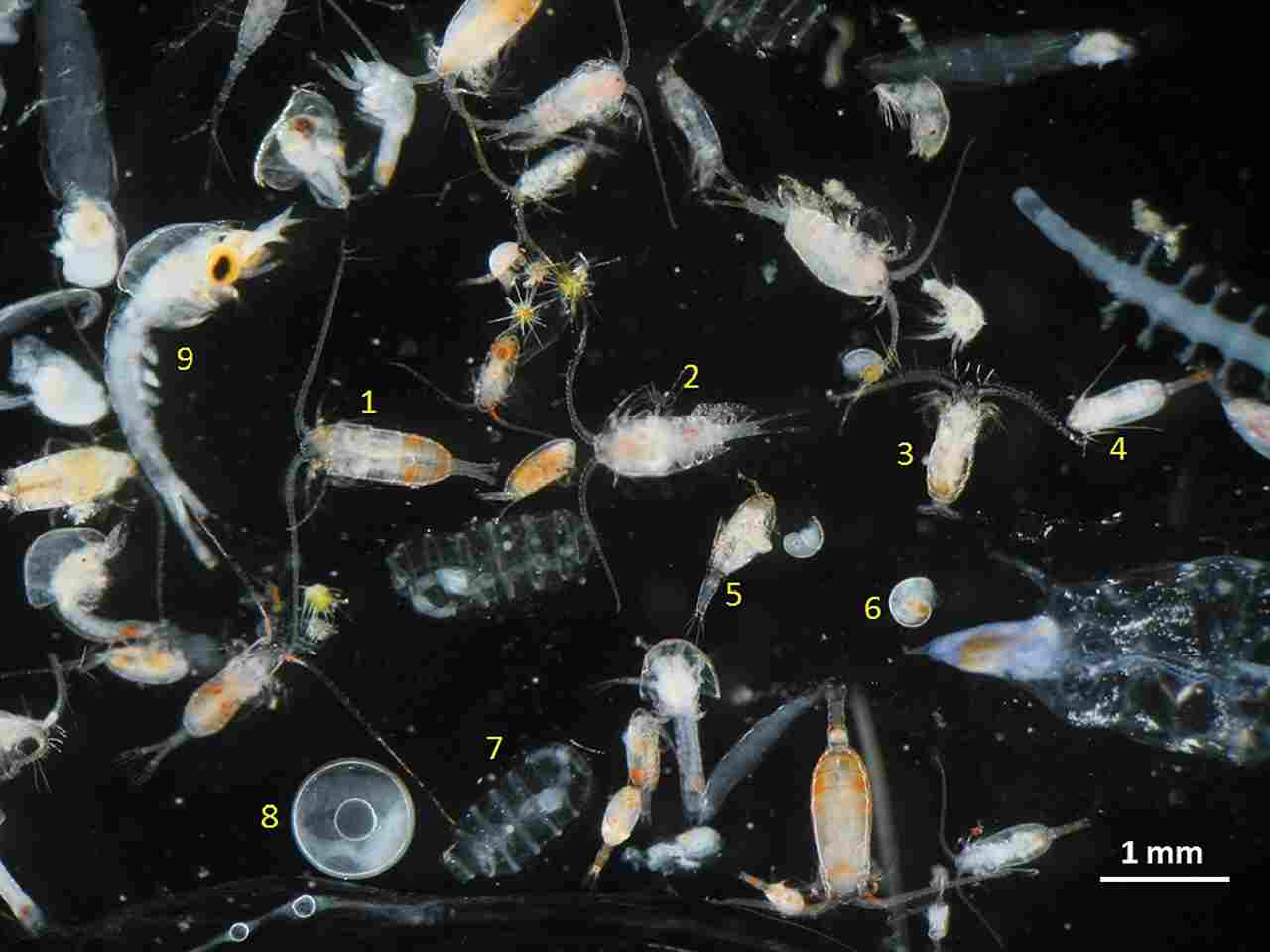
4. Are Zooplankton Producers or Consumers in the Food Chain?
Zooplankton are consumers in the food chain, occupying the trophic level 2 as primary consumers. Throughout the preceding sections, we have explored the reasons why zooplankton are consumers rather than producers. Let’s delve deeper into this topic.
Zooplankton, as mentioned earlier, rely on heterotrophic modes of energy acquisition. They are incapable of manufacturing their own food, unlike primary producers such as phytoplankton. Instead, zooplankton feed on a variety of food sources, with their diet being dominated by phytoplankton. This makes them important consumers in the aquatic food chain.
The trophic footprint and predatory impact of zooplankton are relatively small compared to other aquatic heterotrophs. However, their role as consumers is crucial in transferring energy from primary producers to higher trophic levels. By consuming phytoplankton, zooplankton help regulate the abundance and composition of these primary producers, influencing the overall dynamics of the food web.
It is important to note that zooplankton can exhibit opportunistic carnivorous behavior in addition to their herbivorous tendencies. While they primarily feed on phytoplankton, they may occasionally consume other small zooplankton or even fish larvae. This opportunistic behavior allows zooplankton to adapt to varying food availability and environmental conditions.
5. Are Zooplankton Carnivores?
Zooplankton are primarily herbivorous, as their diet is dominated by phytoplankton. However, they are not EXCLUSIVELY herbivores. Many zooplankton species exhibit opportunistic omnivorous behavior, allowing them to adapt to varying food availability and environmental conditions. This implies that zooplankton can be predatory, although they are not typical carnivores.
Throughout the preceding sections, we have discussed the trophic classification of zooplankton as primary consumers. They occupy the second trophic level in the aquatic food chain, feeding on primary producers such as phytoplankton. This makes them important consumers in transferring energy from lower trophic levels to higher ones.
While zooplankton are mostly herbivorous, consuming phytoplankton as their primary food source, they may also exhibit occasional predatory behavior. This opportunistic feeding allows them to supplement their diet when other food sources are scarce. In some cases, zooplankton may consume other small zooplankton or even fish larvae.
It is important to note that the predatory behavior of zooplankton is not their primary mode of feeding. Their diet is still predominantly herbivorous, with phytoplankton being their main source of energy. However, their ability to adapt and consume other organisms when necessary highlights their flexibility as consumers in the aquatic ecosystem.
6. Is Zooplankton a Producer or Primary Consumer?
Zooplankton are primary consumers in the aquatic food chain. As discussed in the preceding sections, their diet is dominated by phytoplankton, which are the primary producers in aquatic ecosystems. This makes zooplankton an essential link between the primary producers and higher trophic levels.
Being primary consumers, zooplankton rely on consuming producers, such as phytoplankton, for their energy needs. They play a crucial role in transferring energy from the lower trophic levels to higher ones, making them an integral part of the food chain. By feeding on phytoplankton, zooplankton help regulate the population of these primary producers, preventing excessive growth and maintaining the balance of the ecosystem.
Zooplankton’s classification as primary consumers is also supported by their biological simplicity compared to other aquatic heterotrophs. They are relatively small and have a relatively small trophic footprint and predatory impact. This means that their consumption of primary producers is not as significant as that of higher-level consumers, such as fish or marine mammals.
While zooplankton are primary consumers, it is important to note that they can exhibit opportunistic omnivorous behavior. This allows them to adapt to varying food availability and environmental conditions. However, their primary mode of feeding remains herbivorous, with phytoplankton being their main source of energy.
7. Are Zooplankton Carnivores or Herbivores?
Zooplankton exhibit a primarily herbivorous feeding behavior, although they can also display opportunistic and omnivorous tendencies. As discussed in the preceding sections, zooplankton are classified as primary consumers in the aquatic food chain. Their diet is predominantly composed of phytoplankton, which are the primary producers in aquatic ecosystems. This makes them herbivores, as they rely on consuming plant-like organisms for their energy needs.
However, it is important to note that zooplankton can adapt their feeding behavior based on food availability and environmental conditions. In certain situations, they may exhibit opportunistic and omnivorous behavior, consuming other zooplankton or even small prey organisms. This flexibility allows them to survive and thrive in different ecological niches.
Despite their ability to consume other organisms, the primary mode of feeding for zooplankton remains herbivorous. Phytoplankton, such as diatoms and algae, serve as their main source of energy. By consuming phytoplankton, zooplankton play a crucial role in regulating the population of these primary producers, preventing excessive growth and maintaining the balance of the ecosystem.
8. Are Zooplankton Secondary Consumers?
Zooplankton are not typically classified as secondary consumers in the aquatic food chain. As discussed in the preceding sections, they are primarily herbivores, consuming phytoplankton as their main source of energy. While some zooplankton species may exhibit opportunistic or omnivorous behavior, their overall trophic classification remains as primary consumers.
The classification of secondary consumers is typically reserved for organisms that directly consume primary consumers. In the case of zooplankton, they primarily rely on consuming phytoplankton, which are the primary producers in aquatic ecosystems. This makes them an important link between the primary producers and higher trophic levels in the food chain.
However, it is important to note that there may be exceptions to this general classification. In certain microscopic niches or specific ecological contexts, some zooplankton species may exhibit secondary consumer behavior by consuming other zooplankton or small prey organisms. These instances, however, are not the norm and do not represent the overall trophic classification of zooplankton
9. What Do Zooplankton Eat?
Zooplankton primarily feed on phytoplankton, which are microscopic photosynthetic organisms. They rely on these primary producers as their main source of energy. However, zooplankton also consume organic suspended particles in the water column. These particles can include detritus, bacteria, and other organic matter.
The diet of zooplankton is influenced by several factors discussed earlier in this article. Firstly, their diet is dominated by phytoplankton because they are herbivores. Secondly, zooplankton are biologically simpler than most aquatic heterotrophs, which limits their ability to consume larger prey. Lastly, the trophic footprint and predatory impact of zooplankton are relatively small compared to other organisms in the food chain.
Conclusion
* Zooplankton are primary consumers because their diet is dominated by phytoplankton, they are biologically simpler than most aquatic heterotrophs, and their trophic footprint and predatory impact are relatively small.
* Zooplankton are consumers because they are incapable of manufacturing their own food, rely on heterotrophic modes of energy acquisition, and depend on producers as a major food source.
* Zooplankton can be classified as herbivores, as they primarily feed on phytoplankton, but they can also consume organic suspended particles in the water column.
* Zooplankton are not decomposers, but rather play a crucial role in the transfer of energy from primary producers to higher trophic levels.
* Zooplankton belong to various classes, including copepods, krill, and jellyfish, among others.
* Zooplankton are consumers in the food chain, as they rely on other organisms for their energy needs.
* Zooplankton can exhibit predatory feeding behavior, depending on their species and available food sources.
* Zooplankton are not primary producers, as they do not possess the ability to photosynthesize and manufacture their own food.
* Zooplankton can occupy different trophic levels in the food chain, including primary consumers and secondary consumers, depending on their feeding habits and interactions with other organisms.
